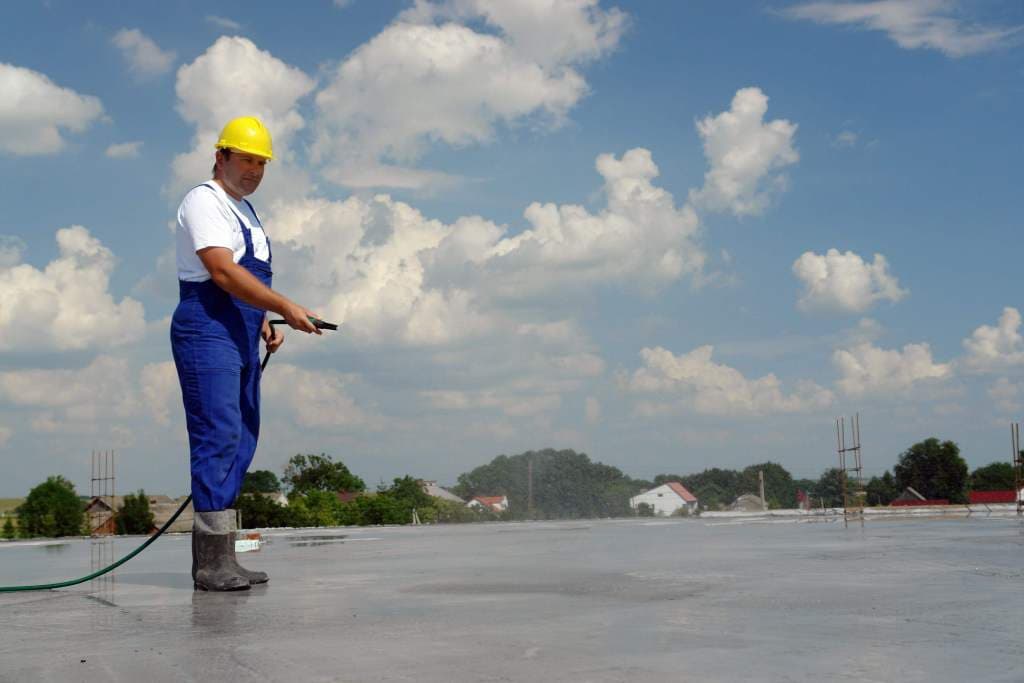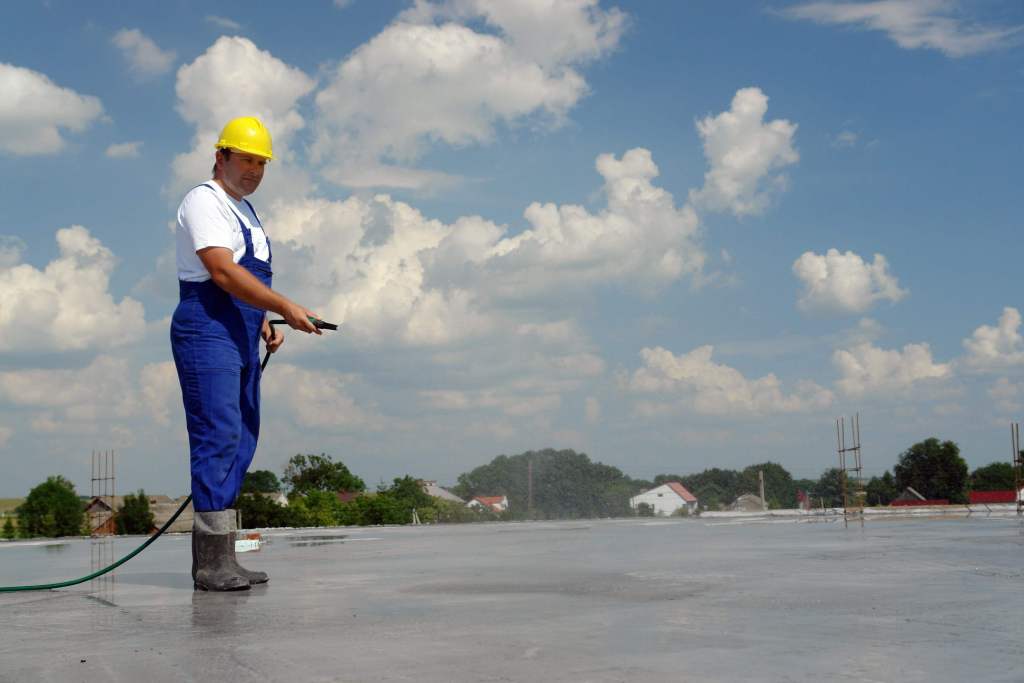
Curing of concrete is the process of maintaining moisture inside the freshly casted concrete to continue the hydration process to achieve the desire properties of hardened concrete. Before starting, curing concrete, you should know the actual behaviour of the freshly casted concrete. Once you know and understand the behaviour of concrete very well, then you will get the better idea when to start curing of concrete.
When we add water in dry concrete mix, hydration of cement will start immediately and heat will be generated inside the concrete. Without proper hydration of cement, concrete will never gain the designed strength.
When the concrete is placed and compacted, cement slurry rises through the surface of concrete due to the settlement of concrete. In technical term, this phenomenon is called as “Bleeding in concrete”. The rate and duration of bleeding depend on many factors i.e. mix proportion, thickness or depth of concrete, concrete compaction method, water-cement ratio etc.
There are so many factors that affect the curing concrete. It depends on the chemical composition and fineness of cementitious materials, water-cement ratio, mixture proportions, aggregate characteristics, chemical and mineral admixtures added, the temperature of the concrete
During initial setting, bleed water will evaporate from the surface of the concrete. The rate of evaporation of bleed water will depend on so many factors i.e. air temperature and relative humidity, concrete temperature, radiant energy from the direct sun, and wind velocities.

Courtesy - 123rf
Due to above described factors, concrete curing is carried out in three phases and the length of time each time last depends on the concrete and environmental conditions.
Here we have discussed these three stages.
01. Initial Curing:
During the initial setting, sometimes bleed water is evaporating from the surface faster than it is rising out from the concrete. If evaporation happens faster than usual time than, the only factor that affect is the high temperature. When all the water gets evaporated from the surface, you need to do some initial curing to minimize the moisture loss. During this period, if you do not start the curing, it may lead to plastic shrinkage cracks in concrete. The initial curing of concrete can also be done by fogging.
02. Intermediate Curing:
Sometimes intermediate curing is necessary and is carried out when finishing is completed but before the concrete has reached its final set. During this period, evaporation may need to be reduced, but the concrete is not yet be able to tolerate the direct application of water or the mechanical damage resulting from the application of plastic sheets. In this stage liquid forming membrane compound can be used effectively to reduce evaporation loss.
03. Final Curing (i.e. Actual Curing that we Normally do):
Final curing is carried after final finishing and after the concrete has reached its final set. Final curing can be done by application of wet covering i.e. ponding method, saturated burlap, spraying water, curing compounds etc. The Normal final setting time of cement is six to eight hours. In short, the curing should start after minimum six hours (Final setting time of cement) and not less than 24 hours.
Thus, when concrete curing has to start is varies and depends on when the surface of the concrete begins to dry. Concrete curing should be started before concrete surface loses its water and undergo shrinkage. This is very important for concrete with low to very low water/cement ratio, which does not have much water to bleed to the surface.
Also Read:
Various types of Concrete Curing Methods
Curing of Concrete: Things to Keep in Mind While Curing
Why Curing of Concrete is Very Important in a Construction?






























